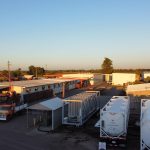You’ve heard that utilities watch the pressure through hydrostatic testing, but you may not know how it works. So, what is hydrostatic testing? With this technique, fuel companies have confidence in the gas tanks they use. Hydrostatic testing is when storage tanks and equipment like a pipe system get tested for strength and leaks.
Hydrostatic testing comes with shutdowns. The hydro tests need personnel to design pressures to define fuel tanks’ integrity, especially in repairs. It involves the application of test equipment that can withstand the pressure test without rupturing. Now, let’s look at how the testing process works.
[bctt tweet=”Have you ever wondered, “What is hydrostatic testing?” Find out the meaning of hydrostatic testing, how it works, and its importance in the gas industry. ” via=”no”]
How Does Hydro Testing Work?
During hydro-testing, the subject under testing gets filled with water—the water targets to expel air from the unit. Next, a pressure at least 1.5 times the amount the system under testing can handle is then applied. The system holds the pressure for a given amount of time as inspection for leaks takes place. A tracer or fluorescent is used to spot cracks and leaks quickly.
Types of Hydrostatic Pressure Testing
Small pressure vessels are a candidate for at least three types of hydrostatic pressure test. One of the tests is the water-jacket test. In this technique, a vessel gets filled with water and then sealed in a chamber filled with water.
Pressure gets applied and timed. Water then gets displaced by the high pressure, and workers measure the expansion.
The second method is the direct expansion method, where a vessel gets filled with a predetermined amount of water. We then take the measurements of all the expelled water. From there, we determine the permanent and total expansion value.
The third one is the proof pressure method. Here we apply internal pressure to spot leaks and weaknesses within a system. It is the only technique that does not need a recording of the permanent and total expansion values.
Advantage of CNG & LNG
Hydrostatic testing gets done on gas cylinder boilers and good in works involving pipeline plumbing. These tests ease the safe transportation and storage of CNG and LNG. A common advantage of CNG and LNG is that both fuels are perfect for use in industrial processes. CNG is simply gasoline used in locomotives, while LPG is mainly used in heating appliances and cooking equipment.
Keep Your Operations Running
Suppose you are a manager in an area with pipelines. You’ll need to perform regular maintenance. You can achieve that by investing in hydrostatic testing. The good news is that you can now answer the question, “what is hydrostatic testing?” Ensure that your equipment undergoes the tests to ensure a continuous operation.
Contact us to get more information on what happens during hydrostatic testing.




